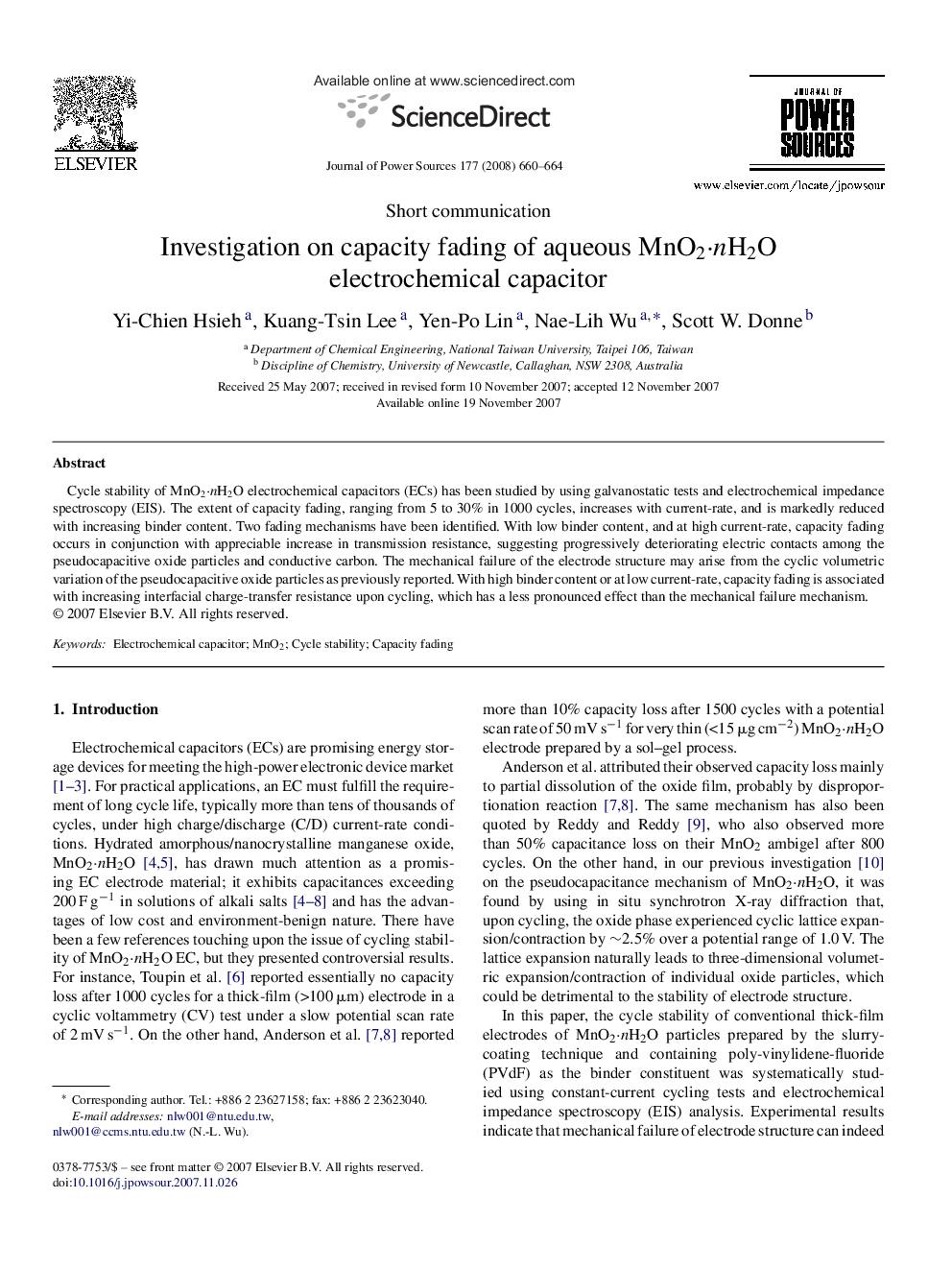| Article ID | Journal | Published Year | Pages | File Type |
|---|---|---|---|---|
| 1285619 | Journal of Power Sources | 2008 | 5 Pages |
Cycle stability of MnO2·nH2O electrochemical capacitors (ECs) has been studied by using galvanostatic tests and electrochemical impedance spectroscopy (EIS). The extent of capacity fading, ranging from 5 to 30% in 1000 cycles, increases with current-rate, and is markedly reduced with increasing binder content. Two fading mechanisms have been identified. With low binder content, and at high current-rate, capacity fading occurs in conjunction with appreciable increase in transmission resistance, suggesting progressively deteriorating electric contacts among the pseudocapacitive oxide particles and conductive carbon. The mechanical failure of the electrode structure may arise from the cyclic volumetric variation of the pseudocapacitive oxide particles as previously reported. With high binder content or at low current-rate, capacity fading is associated with increasing interfacial charge-transfer resistance upon cycling, which has a less pronounced effect than the mechanical failure mechanism.
